The Aston Martin DB2/4 Mark 3 Sports Car

1959 Aston Martin DB2/4 Mark 3 Image
from Classic to Modern
THE CAR
The Aston Martin DB2/4 Mark 3 sports car was introduced in 1957 as a 2+2 hatchback, and was the successor to the DB2/4 Mark 2, of which 199 cars covering three variants were built.
Although steering by worm and sector, a live back axle, and a four speed manual gearbox were retained, it differed from the Mark 2 as follows:
- Grille was reshaped into one similar to that used in the DB3S racer
- Instrument panel layout was changed
- A Laycock-de-Normanville overdrive was available as an optional extra
- Automatic transmission (only 5 cars were fitted) was available after the first 100 units, as were front wheel Girling disc brakes
- Rear tailfin was modified to accommodate replacement rear lights from the Humber Hawk saloon
In 1959, in order to complement the hatchback variant, a two seater Drophead Coupe and Fixed Head Coupe were introduced towards the end of production of the Mark 3 that year.
A variety of engines were used with the Drophead Coupe, and both variants were fitted with the more traditional hinged roof lids in preference to the hatchback body styling of the 2+2.
The Mark 3 sports car continued with the coachbulder Tickford, and was the final evolution of the DB2 by way of the Mark 3A in 1958, and ending with the Mark 3B in 1959.
When production ended in 1959, 55 units were produced, and comprised: 462 Hatchback, 5 Fixed Head Coupe (with DBD engine only), and 84 Drophead Coupe (68 with DBA, 2 with DBB, and 14 with DBD engines).
Interestingly, a DB2/4 Mark 3 was used in the James Bond film "Goldfinger".
An eminent motoring magazine described the Mark 3 as "A car for the connoisseur".

Aston Martin DB2/4 Mark 3

1957 Aston Martin DB2/4 Mark 3 Image

Aston Martin DB2/4 Mark 3 Image
Full Screen Full Screen
THE ENGINE
There were four different power plants available for this Aston Martin, depending on the ultimate role of the car:
DBA Engine
This was the standard version, and consisted of the 2.9 litre, straight six, Lagonda unit, as used in the Mark 2, fitted with two SU carburettors, and developed 165 bhp, with a top speed of 120 mph, and 0-60 mph in 9.3 secs.
However, when fitted with an optional dual exhaust system, output would increase to 178 bhp, producing the same 120 mph top speed but with 0-60 mph now down to 9.2 secs.
DBB Engine
This optional unit with increase performance was fitted with three Weber twin choke carburettors, specially designed extended duration camshafts, increasing compression to 8.6:1, high compression pistons, together with the dual exhaust system.
This format now developed 195 bhp, but was only fitted to 10 cars.
DBD Engine
This less extreme optional unit was fitted to 47 cars, and consisted of three SU carburettors and the dual exhaust system, which developed 180 bhp.
DBC Engine
This was the ultimate option fitted to only one car, and consisted of three Weber twin choke carburettors, compression raised to 9.5:1, racing camshafts, specialised con rods, and high compression pistons.
This arrangement developed 214 bhp.
Technical Data DB2/4 Mk3 DB2/4 Mk2 DB2/4 Mk1
Production 1957-1959 1955-1957 1953-1955
Engine, cc 2922 2922 2922
Cylinders, bhp 6, 178 6, 165 6, 140
Torque ft/lbs 176 184 178
Top Speed mph 122 120 118
0-60
mph, secs 8.8 9.3 9.7
0-100 mph, secs 25.3 28.0 -
Standing 1/4 Mile, secs 16.8 16.9 17.2
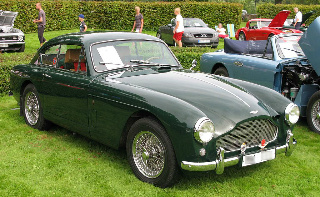
1959 Aston Martin DB2/4 Mark 3 Image
COMPETITION
The following sports cars were typical competitors of the Aston Martin DB2/4 Mark 3: Jaguar XK150, Mercedes-Benz 300 SL, and Ferrari 250 Europa GT
Jaguar Mercedes-Benz Ferrari
Technical Data DB2/4 Mk3 XK150 300 SL 250
Europa GT
Production 1957-1959 1957-1960 1955 1955
Engine, cc 2922 3442 2996 2953
Cylinders,
bhp 6, 178 6, 190 6, 212 12, 220
Torque ft/lbs 176 203 203 195
Top Speed mph 122 132 135 143
0-60 mph,
secs 8.8 9.2 8.8 6.8
0-100 mph, secs 25.3 24.9 19.0 16.4
Standing
1/4 Mile, secs 16.8 17.0 - 15.0
SPORTS CARS FOR SALE
A fine example of an Aston Martin DB2/4 Mark 3 sports car would fetch in the region of $200,000/£125,000 to $250,000/£160,000, whilst a really superb car would command between $300,000/£190,000 and $400,000/£250,000.
see All My Reviews
.
.
Home › Aston Martin Sports Car › Aston Martin DB2/4 Mark 3 Sports CarAston Martin DB2/4 Mark 3
ASTON MARTIN LINKS


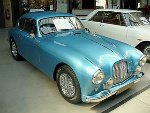

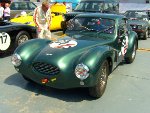


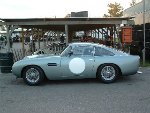

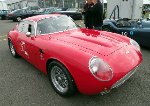
Aston Martin DB4 GT Zagato Sanction

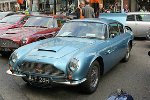
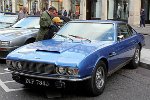




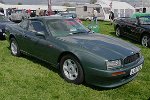

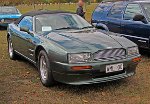
Aston Martin Virage Volante & Vantage
ASTON MARTIN LINKS END





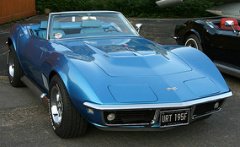


New! Comments
Have your say about what you just read! Leave me a comment in the box below.